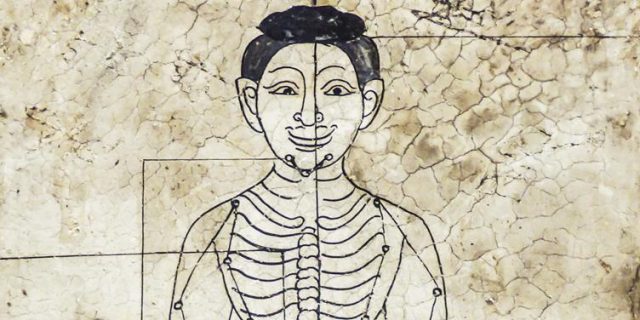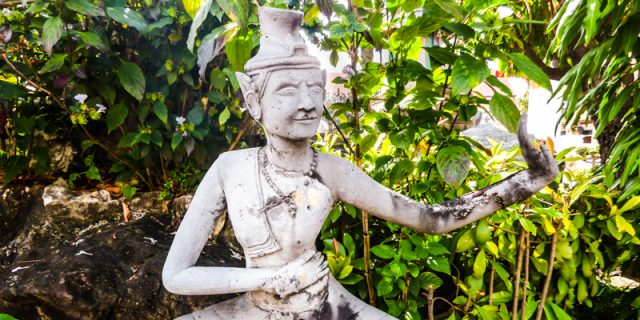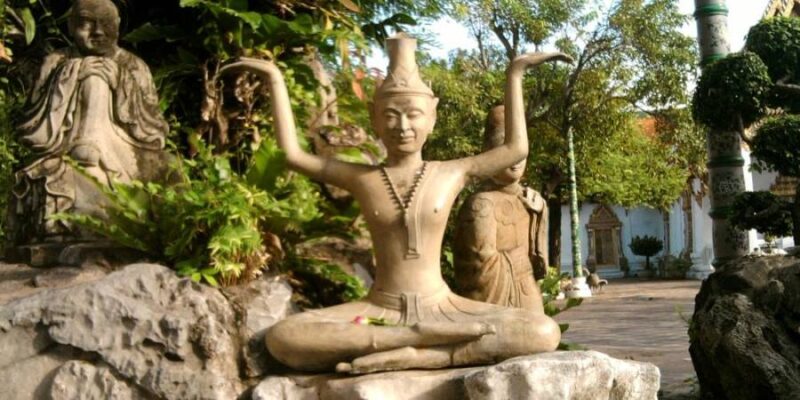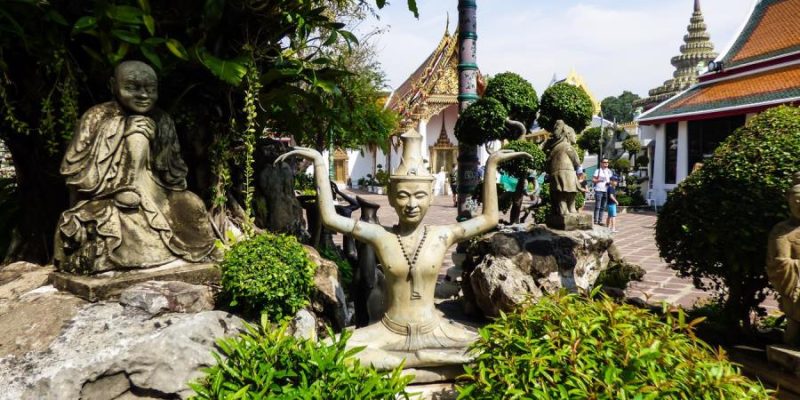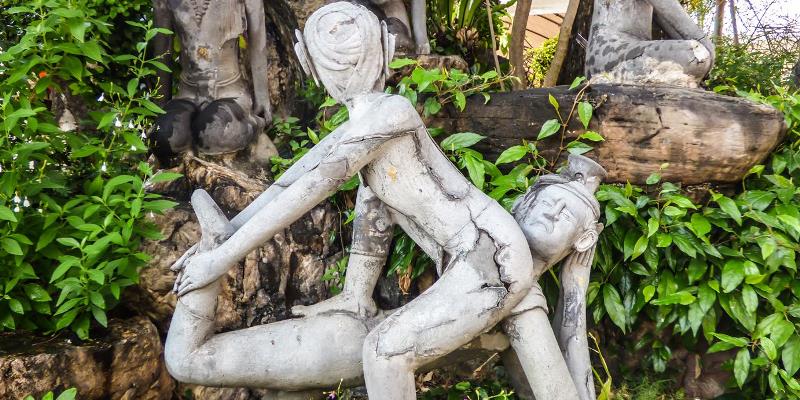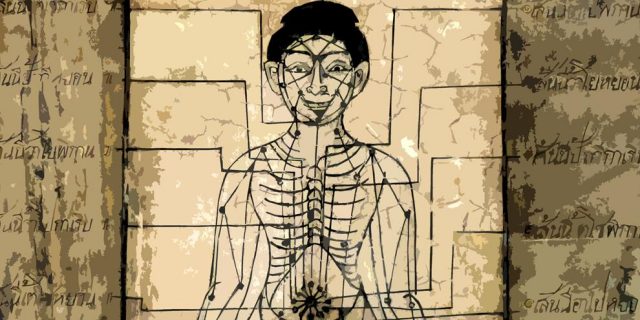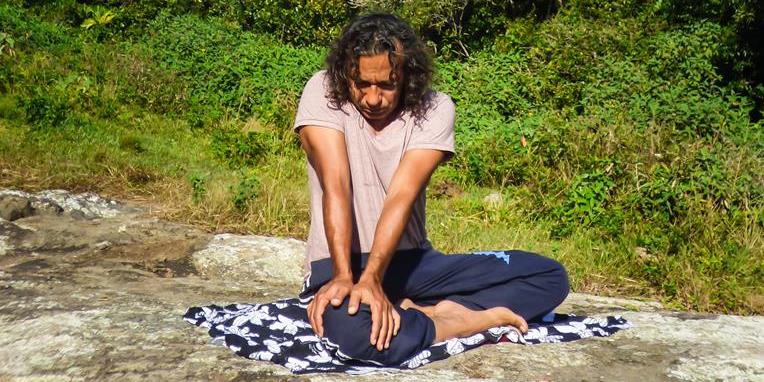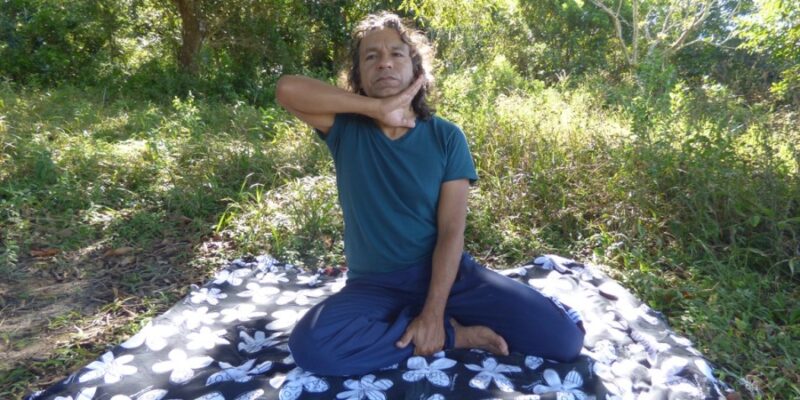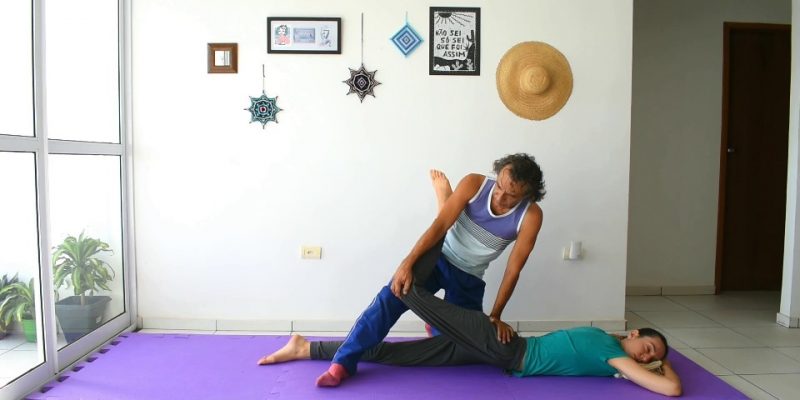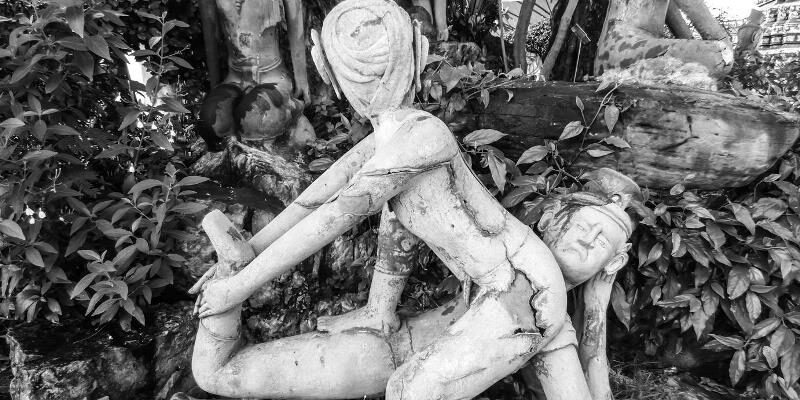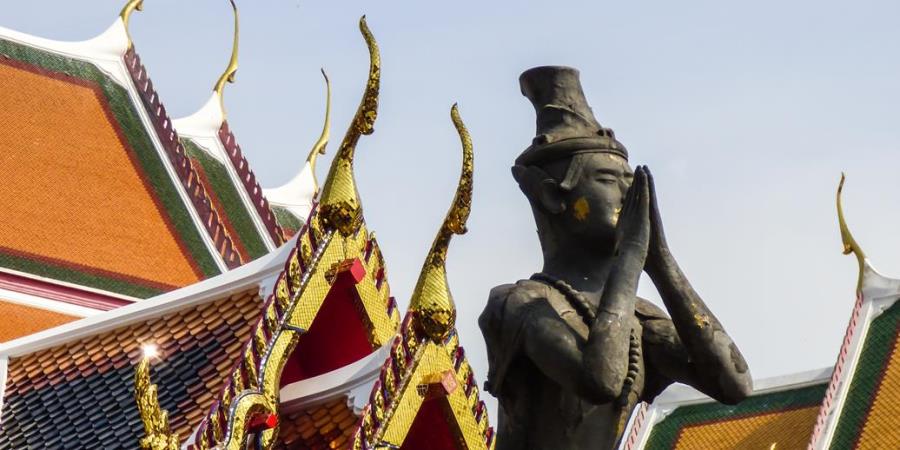
One of the most confusing things within the Thai Massage community is the use of the phrase “Thai Yoga.” It suggests a Yogic activity, something directly related to Indian Yoga. Nevertheless, it’s used as a synonym for Thai Traditional Massage (Nuad Thai or Nuad Boran), an ancient Thai healing practice which has only remote connections to Yoga.
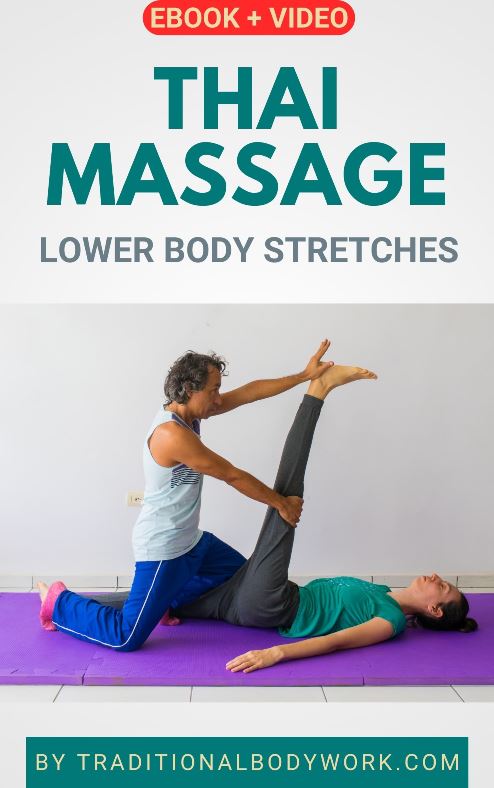
Of course, there’s a reason why the use of “Yoga” sneaked into Thai Massage; part of the techniques applied are Yoga-like stretches, some of which resemble Yoga poses (Asanas), or are even derived from those. It’s why Thai Massage is sometimes called “Yoga for Lazy People” or “Passive Yoga.”
Another reason is that the concept of the Thai Sen Energy Lines (Vital Life Energy Meridians) is somewhat related to the Indian Yoga Nadis (Prana Channels or Life Force Meridians in Yoga).
Yet, it was Asokananda (Harald Brust), a Thai Massage teacher and the founder of the Sunshine Network, who, in the 1980s, coined the label “Thai Yoga Massage” to emphasize the Yogic aspect of Thai Massage. At the same time, Asokananda introduced a substantial set of Yogic stretches into the standard Thai Massage routine he taught.
All that started to have its own life and drive, and today, Thai Yoga Massage or Thai Yoga is often used synonymously with Thai Massage. In the West, that is. But, it has come to a point where even some Thai Massage schools and teachers in Thailand apply the label “Thai Yoga Massage” to offer their trainings. Of course, to attract Westerners to their training courses.
Mind that in Thailand, “Yoga” was never used with regard to Thai Massage. In Thailand, Thai Massage was and is still called Nuad Thai (Thai Massage, Thai Touch, or นวดไทย), Nuad Phaen Thai (Thai Style Massage or นวดแผนไทย), Nuad Boran (Traditional Massage or Ancient Massage), or Nuad Phaen Boran (Ancient Thai Style Massage or นวดแผนโบราณ).
If there is something that could be called “Thai Yoga” than it would rather be another Thai Healing Arts practice called “Reusi Dat Ton” or The Monk’s Thai Ascetic Self-Stretching and Self-Massage Exercises. This practice resembles Indian Yoga a bit more (not being Passive Yoga but Active Yoga), although even in Reusi Dat Ton (Reusi Datton, Rue-Si Datton, or Rusie Dutton, and many other phonetic transcriptions) the word “Yoga” itself is absent.
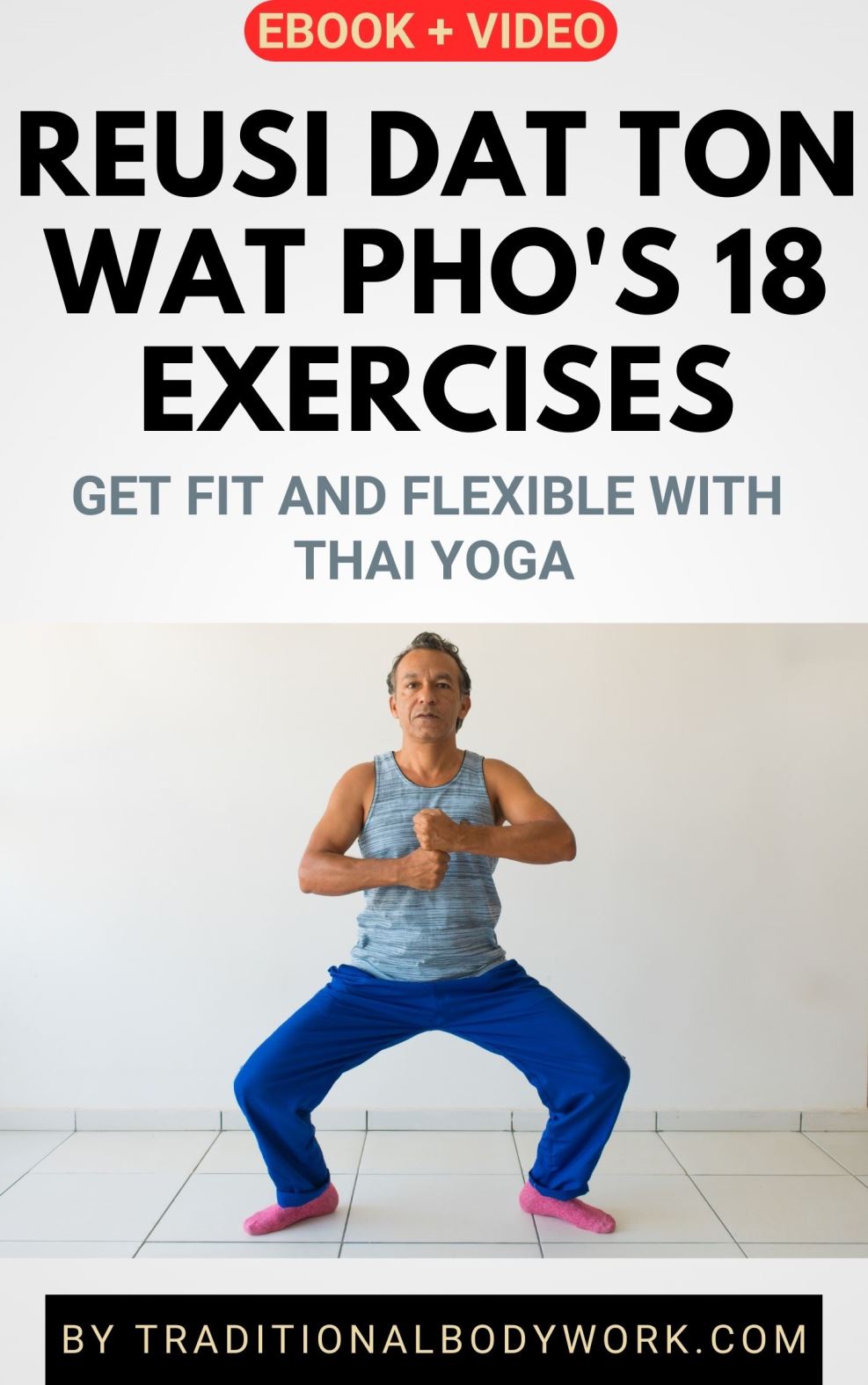
The Thai phrase Reusi Dat Ton (ท่าฤาษีดัดตน) consists of three different parts: “Ruesi” which comes from the Indian Sanskrit word “Rishi” and means ascetic or hermit, “Dat” means to stretch and “Ton” refers to oneself. Hence, “Rue-Si Dat Ton” means something like “the ascetic who stretches himself.” Although the word “Yoga” is absent, it’s quite obvious that many poses and moves in Reusi Datton are very much akin to exercises found in both Indian and Tibetan Yoga.
To make things easier for Westerners, Reusi Dat Ton practitioners, schools and trainers in Thailand label Reusi Dat Ton as “Thai Traditional Yoga” or “Thai Yoga,” designations used in the West for this practice. Thus what has happened is that nowadays “Thai Yoga” can refer to Nuad Thai (Thai Massage) or to Reusi Dat Ton (Ascetic Self-Stretching Exercises).
To be honest, it doesn’t make things easier. It’s harder to find what you’re looking for or understand what you’re looking at, and moreover, by incorporating the use of “Yoga” for Nuad Thai and Reusi Dat Ton these Thai Healing Arts have gotten very different connotations, a feeling and idea connected to these practices that only partly has something to do with them.
Whatever the case, no real harm done as long as we understand the origins of the usage of “Yoga” in relation to Nuad Thai and Reusi Dat Ton. Doing so, we can make informed decisions by discerning what’s-what and what’s-not and choose the right training course or treatment.









